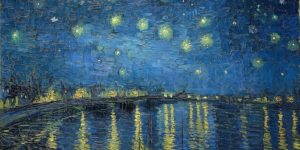Deliver us from evil.
“You cannot be a (wo)man of faith unless you know how to doubt. You cannot believe in Gaia unless you are capable of questioning the authority of prejudice, even though that prejudice seems to be religious. Faith is not blind conformity to a prejudice–a ‘pre-judgment.’ It is a decision, a judgment that is fully and deliberately taken in the light of a truth that cannot be proven.”
-Thomas Merton, New Seeds of Contemplation
[G7 in France]
But deliver us from evil, past, present, and to come.
We must strive to overcome evil, but even our best efforts will require Gaia’s help.
The Lord said to Evil, “‘Where did you come from?’ Evil answered, ‘From prowling about on the earthmovers going back and forth on it.” Job 1:7
Cosmology: Part I
The Change of a World View
Fr. Richard Rohr, Center for Action & Contemplation
Today, every academic, professional discipline—psychology, anthropology, history, the various sciences, social studies, art, and business—recognizes change, development, and some kind of evolving phenomenon. But in its search for the Real Absolute, much of Christian theology made one fatal mistake:
It imagined that any notion of God had to be unchanging, an “unmoved mover,” as Aristotelian philosophy called it.
There’s little evidence of a rigid God in the biblical tradition or the image of Trinity—where God is seen as an active verb more than a substantive noun. But many Christians seem to have preferred a stable notion of God as an old white man, sitting on a throne—much like the Greek god Zeus (whose name became the Latin word for God or “Deus”)—a critical and punitive spectator to a creation that was merely a mechanical clock of inevitable laws and punishments, ticking away until Doomsday.
We need a new way of thinking about the universe and our place in it. To begin our two weeks on this theme, I offer a clear and concise description of our changing worldview from Australian theologian Denis Edwards (I waited in a long line once just to thank him for his fine work):
Our theological tradition has been shaped within the worldview of a static universe. The great theological synthesis of St. Thomas Aquinas [1224–1274], for example, was formed within a culture which took for granted that the world was fixed and static, that the Sun and the Moon and the five known planet stars revolved around the Earth in seven celestial spheres, moved by angels, that beyond these seven spheres there were the three heavens, the firmament (the starry heaven), the crystalline heaven, and the empyrean, and that there was a place in the heavenly spheres for paradise. It was assumed that human beings were the center of the universe, that Europe was the center of the world, and that the Earth and its resources were immense and without any obvious limits.
By contrast, we are told today that the universe began with a cosmic explosion called the Big Bang, that we live in an expanding universe, with galaxies rushing away from us at an enormous rate, that the Earth is a relatively small planet revolving around the Sun, that it is hurtling through space as part of a Solar system which is situated toward the edge of the Milky Way galaxy, that we human beings are the product of an evolutionary movement on the Earth, and that we are intimately linked with the health of the delicately balanced life systems on our planet.
The shift between these two mindsets is enormous. It needs to be stressed that most of our tradition has been shaped by the first of these, and even contemporary theology has seldom dealt explicitly with the change to a new mindset. . . .
We have no choice but to face up to the ecological crisis which confronts us. Religious thinkers . . . are searching for a new synthesis of science and faith, a new cosmology, and a “new story.” [1]
[1] Denis Edwards, Jesus and the Cosmos (Paulist Press: 1991), 3-5.
Adapted from Richard Rohr, “Evolution Is Another Name for Growth,” “Evolutionary Thinking,” Oneing, vol. 4, no. 2 (CAC Publishing: 2016), 111-112.
Image credit: Starry Night Over the Rhône (detail), Vincent van Gogh, 1888, Musée d’Orsay, Paris, France.


Leave a Reply